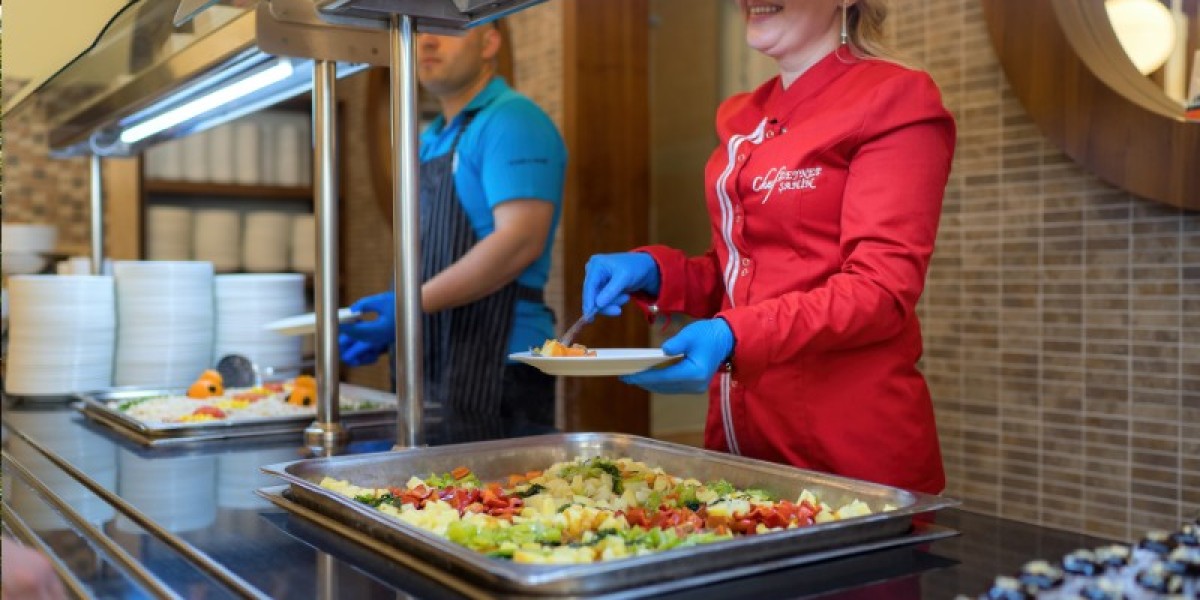The Australian quick service restaurant (QSR) market, valued at AUD 29.13 billion in 2024, has experienced substantial growth, primarily driven by the demand for quick, easily accessible meals that align with the fast-paced lifestyles of urban populations. In recent years, Australians are increasingly opting for convenient dining solutions that provide speed, affordability, and quality, leading to the rapid rise of the QSR industry.
The QSR market is expected to grow at a compound annual growth rate (CAGR) of 9.20% from 2025 to 2034, potentially reaching AUD 70.24 billion by 2034. This remarkable growth is driven by factors such as evolving consumer preferences, menu diversification, and technological advancements that are enhancing the customer experience. In this article, we will explore the key factors fueling this expansion, emerging trends, and the future outlook of Australia's QSR industry.
Key Drivers of Growth in the Australian QSR Market
1. Demand for Convenient and Fast Dining Solutions
The primary driver behind the growth of the QSR market in Australia is the increasing demand for quick and convenient meal options. As urban populations continue to grow, busy Australians—especially working professionals and young adults—are increasingly opting for meals that fit their on-the-go lifestyle. With limited time for traditional dining, consumers are turning to fast food and quick service restaurants that offer affordable meals without sacrificing quality or taste.
Quick service restaurants cater to a wide variety of meal preferences, from burgers and pizzas to salads and bowls, making them a popular choice for customers with diverse tastes and dietary needs. Additionally, QSRs are ideal for consumers who want a fast meal without the hassle of cooking or waiting in long restaurant queues, contributing significantly to the growth of this sector.
2. Menu Diversification and Customization
As consumer preferences become more diverse, quick service restaurants in Australia are adapting by offering a broader range of menu options. The rise of health-conscious dining and demand for plant-based or vegan alternatives has prompted many QSR brands to introduce healthier and more varied menu options.
In addition to traditional fast food items like burgers, fries, and pizzas, many QSRs are now offering gourmet salads, wraps, smoothies, and plant-based proteins to cater to health-conscious consumers. Customization has also become a key aspect of the dining experience, with customers able to personalize their meals based on their dietary preferences or restrictions. The shift towards offering more sustainable, organic, and locally sourced ingredients is also driving innovation in the QSR market.
QSR chains are now creating menus that accommodate specific needs, whether it's gluten-free, dairy-free, or low-calorie options. This trend ensures that quick service restaurants continue to appeal to a wide range of consumers and provides them with an opportunity to stay relevant in a highly competitive industry.
3. Technological Advancements and Mobile App Integration
Technology is playing a critical role in shaping the future of the Australian QSR market. The integration of mobile apps, online ordering platforms, and self-service kiosks is enhancing the customer experience by offering convenience, speed, and personalization. Consumers can now place orders via mobile apps, track deliveries, and access loyalty rewards, all from the comfort of their smartphones.
The rise of food delivery platforms such as UberEats, Deliveroo, and Menulog has also contributed to the growth of the QSR market. These platforms allow customers to enjoy restaurant-quality food at home or at work, boosting sales for QSR brands that embrace delivery services. Additionally, QSRs are increasingly adopting contactless payment methods, enabling faster transactions and enhancing customer satisfaction.
Many QSR chains are also using customer data collected through digital platforms to improve their menus, tailor promotions, and create personalized offers based on customers’ past purchases. This data-driven approach allows businesses to better understand customer preferences and adjust their offerings accordingly.
4. Franchise Model and Expanding Store Networks
The franchise model has played a pivotal role in the expansion of the QSR market in Australia. Well-established QSR brands have been able to grow rapidly through franchising, allowing them to reach new customers across different regions. The relatively low cost of setting up a QSR franchise compared to other types of restaurants makes it an attractive investment opportunity for entrepreneurs and business owners.
The expansion of QSR chains into both metropolitan and regional areas has significantly contributed to the market’s growth. Additionally, many brands are adopting a multi-channel strategy, which includes both physical stores and virtual or ghost kitchens. These new models allow QSRs to reach customers through various channels, including dine-in, takeout, and delivery, further driving sales.
5. Changing Consumer Preferences and Growing Appetite for Global Cuisines
As Australia’s population becomes more multicultural, there is a growing demand for diverse, international flavors and culinary experiences. Australian consumers are becoming more adventurous when it comes to food, embracing different cuisines such as Asian, Mediterranean, Middle Eastern, and Latin American. In response to this trend, QSRs are expanding their menus to incorporate global flavors, helping them stand out in a competitive market.
By offering a variety of ethnic dishes and fusion meals, QSRs are able to attract a broader customer base and cater to different taste preferences. This diversification allows quick service restaurants to stay relevant and competitive while appealing to consumers who are seeking new and exciting dining options.
Key Trends Shaping the Australian QSR Market
1. Health-Conscious and Sustainable Eating
One of the key trends shaping the Australian QSR market is the increasing demand for healthy, sustainable, and ethically sourced food. Consumers are becoming more mindful of the ingredients in their meals and are looking for options that align with their values regarding health, sustainability, and animal welfare.
As a result, QSRs are embracing sustainable practices, including reducing food waste, using eco-friendly packaging, and sourcing ingredients from ethical suppliers. Additionally, many QSRs are introducing plant-based menu items to cater to the growing demand for vegan and vegetarian options, helping brands align with the shift toward more conscious eating habits.
2. Enhanced Customer Experience with Digital Innovation
Digital technology is transforming the way customers interact with QSRs. From online ordering and contactless payment options to self-order kiosks and mobile apps, technology is streamlining the ordering process and improving the overall customer experience. Many QSRs are also experimenting with AI-powered tools, such as personalized menus and voice-activated ordering systems, to enhance convenience and customer satisfaction.
Moreover, virtual kitchens and cloud kitchens are gaining momentum in the QSR sector, allowing brands to operate without physical storefronts while serving customers through delivery platforms. This model helps QSR chains expand their reach without the overhead costs associated with traditional brick-and-mortar locations.
3. Social Media and Influencer Marketing
Social media continues to play a significant role in driving brand awareness and customer engagement in the QSR market. With the rise of platforms like Instagram, TikTok, and YouTube, quick service restaurants are increasingly collaborating with influencers to promote new products, seasonal offerings, and limited-time deals.
Social media influencers are helping QSR brands reach wider audiences, particularly younger consumers, who are highly influenced by digital content. As a result, QSRs are leveraging influencer marketing to create buzz around new menu items, build brand loyalty, and engage customers in real-time.
4. Focus on Delivery and Takeaway Services
The growing demand for food delivery services is another important trend driving the Australian QSR market. With the convenience of ordering food from home or the office, more Australians are opting for delivery and takeaway options, especially as busy lifestyles continue to dominate.
QSRs are increasingly partnering with third-party delivery platforms, such as UberEats, Deliveroo, and Menulog, to reach customers in a convenient and cost-effective way. The convenience of having a quick meal delivered directly to their door is a major selling point for consumers, leading to increased demand for delivery and takeaway options.
Challenges Facing the Australian QSR Market
1. Intense Competition
The Australian QSR market is highly competitive, with numerous brands fighting for market share. Established chains like McDonald’s, KFC, and Hungry Jack’s face competition from newer entrants, including smaller, independent brands and fast-casual restaurants. To stand out in this crowded market, QSRs must continuously innovate, offer unique menu items, and enhance the customer experience.
2. Rising Operational Costs
With the growing demand for high-quality, sustainable ingredients and the adoption of technology, operational costs for QSRs have been rising. This includes the cost of food, labor, packaging, and technology investments. To maintain profitability, QSRs need to strike a balance between delivering high-quality meals, managing costs, and keeping prices competitive.
Future Outlook for the Australian QSR Market
The Australian quick service restaurant market is expected to continue its impressive growth trajectory, with a projected market value of AUD 70.24 billion by 2034. The shift toward healthier eating, enhanced customer experiences through technology, and menu diversification will drive innovation and competition in the market.



